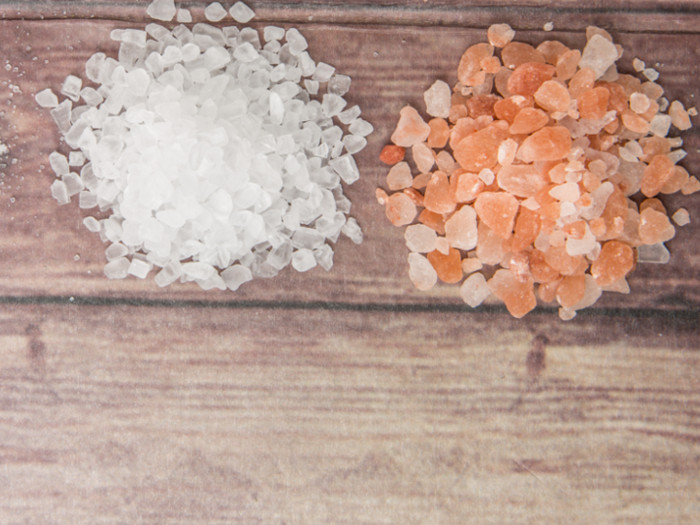In the debate between Himalayan salt vs sea salt, there are a number of factors to consider before choosing one for your new favorite spice.
Himalayan Salt vs Sea Salt
Although Himalayan salt and sea salt share certain characteristics, there are some notable differences between them.
Source
- Himalayan salt is found in and around the Punjab region of Pakistan. For nearly 1,000 years, this colorful form of rock salt has been mined and used from that region, although its use may date back far longer. [1]
- Sea salt is not extracted from mineral deposits, like Himalayan salt or table salt, but is instead extracted directly from seawater. [2]
Color
- Himalayan salt is pink in color due to the color of the rock ore, which is primarily influenced by the rich concentration of iron. This is why it is often referred to as Himalayan pink salt.
- Ranging from green and red to dull gray or pitch-black, sea salt can come in many different shades. Since it can be extracted from seawater all over the world, the different mineral compositions and algae may change the color and flavor of sea salt. [3]

Himalayan salt vs sea salt Photo Credit: Shutterstock
Chemical Composition
- The chemical composition of Himalayan salt is still mainly composed of sodium chloride, so it is quite similar to table salt and sea salt from a chemistry perspective.
- Both salts are natural salts and may contain mineral impurities, such as high levels of lead and copper, due to environmental pollution. [4]
Flavor
- In terms of saltiness, there is not much difference between Himalayan and sea salt. The larger, more granular types of salt have a saltier taste.
- Both salts have a cleaner flavor than table salt because of their mineral content. The natural salts tend to dull the sharpness of table salt in dishes.
Texture
- Sea salt, which is extracted from seawater, has a natural moisture and has a softer texture as compared to Himalayan salt. It dissolves more easily than Himalayan salt when used in foods.
- The texture of Himalayan and sea salt tend to be more coarse than other varieties of salt, making them a popular final touch or topping on certain dishes. Both work well as finishing salts.
- Because of their granular texture, they are used in brine and marinades.
Which is Better For You?
Let us take a look at the health benefits of Himalayan salt vs sea salt:
- Processing: Before Himalayan salt can be safely added to your food, it needs to be processed and purified, at which point it can be used in the same way as regular salt. The production process leaves this salt with few additional benefits over table salt, although it retains its pink color. Meanwhile, sea salt is salt produced by the evaporation of seawater due to the heat of the sun. There is less processing time used in its production.
- Minerals: Himalayan salt does contain iron oxide and other trace minerals. Sea salt also has some amount of trace minerals like potassium, iron, and zinc.
- Sulfates: Some people claim that darker varieties of sea salt have more sulfates, which can be beneficial to the body.
- Salt lamps: While there are some who claim that Himalayan salt baths and salt lamps can aid health in a number of ways – from detoxifying the body to protecting the respiratory system – there is little research to verify these claims.
There is no major health benefit linked with using either Himalayan salt or sea salt. However, the main health benefit is that both of these natural salts contain a very small amount of iodine, as opposed to higher levels in iodized table salt. So go ahead and experiment with different natural salts to find what suits you better!
